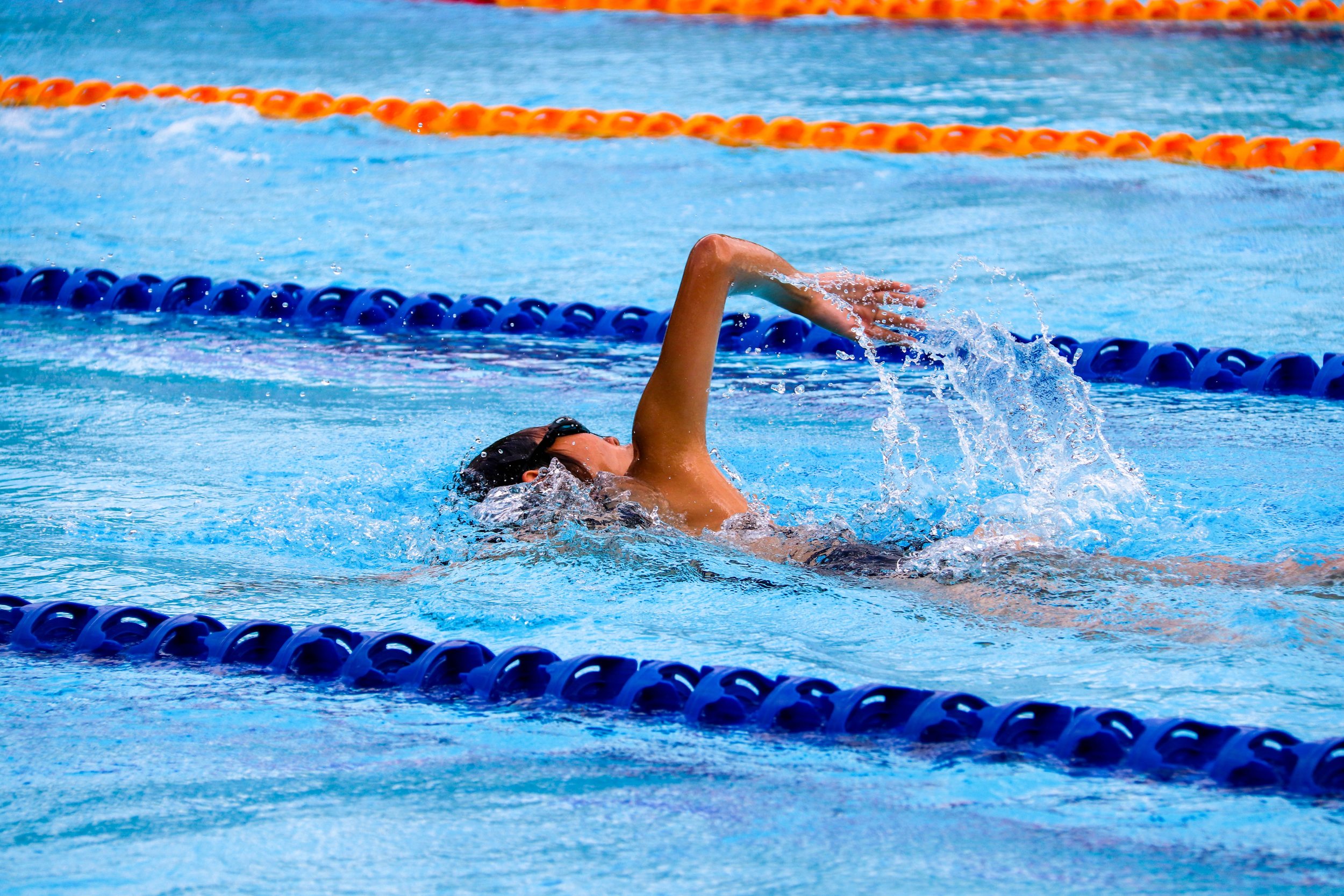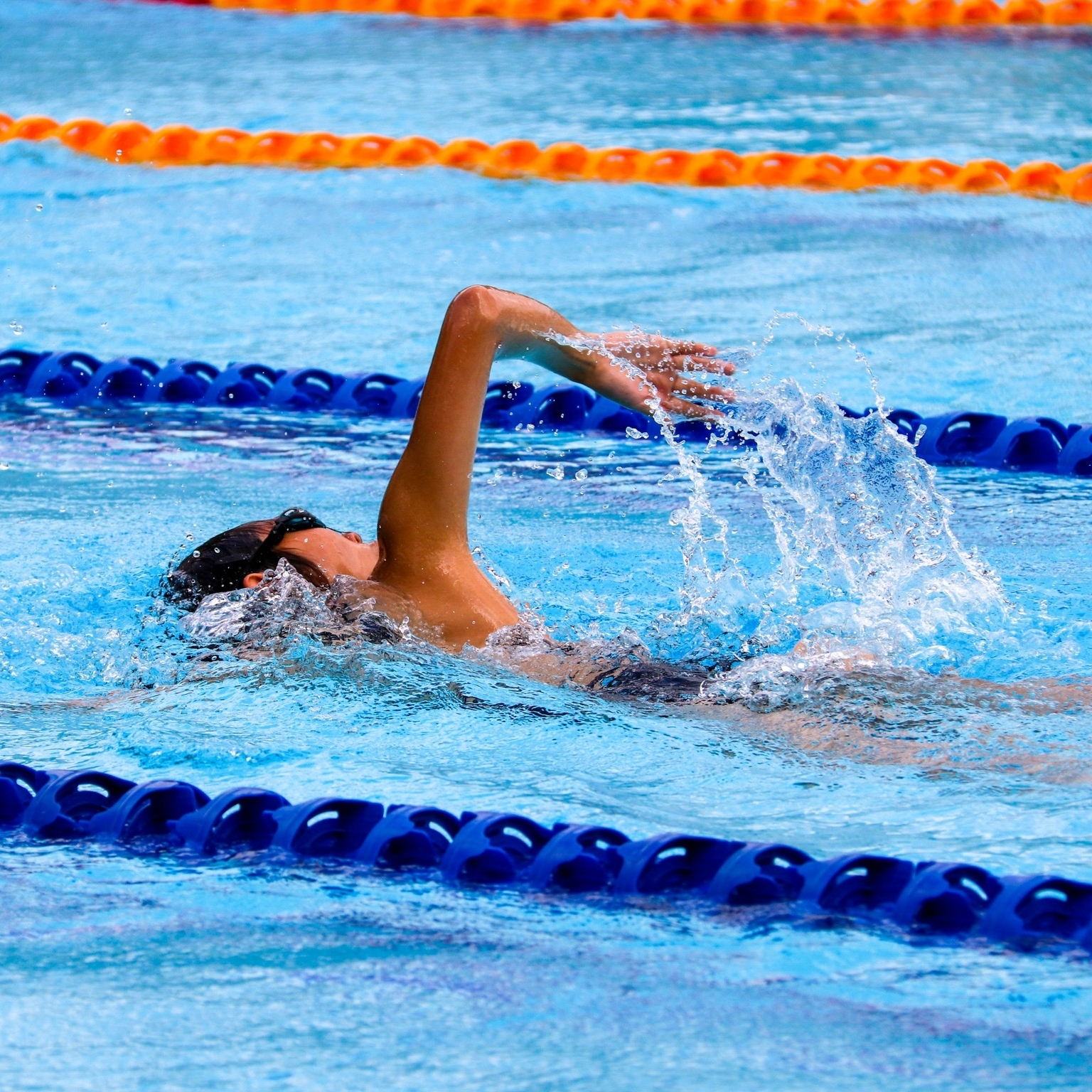
Swimming is a great lifelong sport that can be enjoyed for competition or recreation at any age. Even with arthritis, back pain, or injuries this low impact activity can improve strength and fitness. However, low impact doesn’t mean NO risk for injury.
The most common swimming complaint is shoulder pain. In fact, there is a term for it – Swimmer’s Shoulder.
The complaint is usually pain on the first and side of the shoulder, that increases with overhead activities. It involves the tendons, ligaments, muscles, and joint capsule around the shoulder.
These symptoms usually develop as a result of fatigue – after swimming more frequently or longer distances than usual. They are usually diagnosed as an -itis (bursitis, tendonitis, capsulitis, or arthritis). An -itis means there is inflammation and irritation in that particular part of the shoulder.
Here are 7 things you can start doing on your own to avoid these swimming injuries.
{The Good News is that these are the same things you can do to improve the efficiency of your stroke as well}
1. Improve Posture
If you spend most of your time outside the water in a slumped posture, the muscles in your chest and the front part of your body become tight. This decreases your shoulders available motion and can result in pinching in the shoulder joint.
2. Alternate Side Breathing
Body symmetry is key to being pain-free. Alternating sides that you breath on allows for this symmetry by equalizes muscle development. This also allows for a smoother and more efficient stroke (even if one side feels awkward at first).
3. Body Rotation
Don’t let your body remain flat as you turn your head to breath. Allow it to naturally rotate. Turn your body as if your backbone was a skewer. This gives you more strength and less stress on your shoulder joints.
4. Catch the Water
When your hand entered the water have your 4th finger lead the arm. If the thumb entered first you have too much inward rotation of the shoulder. This is a vulnerable position for the shoulder joint and injuries can occur.
5. Pull In Line
As you pull the arm through the water, it should extend straight out from the shoulder. It should not cross the body (which can happen with too much rotation) nor should it reach out too wide (which is common in too flat a position).
6. Alternate Strokes
By changing your stroke frequently – freestyle, breaststroke, backstroke – you use different muscles and move the shoulder in a different way. This prevents repetitive motions from causing an overuse injury.
7. Strengthen the Shoulder
The shoulder joint can move in every direction and the muscles that surround it give it support to do this safely. The most important muscles to work on to prevent injury and have a more powerful stroke include rotator cuff muscles, upper back, and core muscles.
The best way to keep shoulder pain at bay is through prevention and early treatment. Strategies for this include addressing a swimmers training methods, stroke mechanics, and what else they are doing outside of the water.
A specialized sports therapist can guide you on this journey to prevention or injury recovery. You are always welcome to call and ask us ANYTHING. For more FREE information on how to aid your performance and recovery click the link below.




